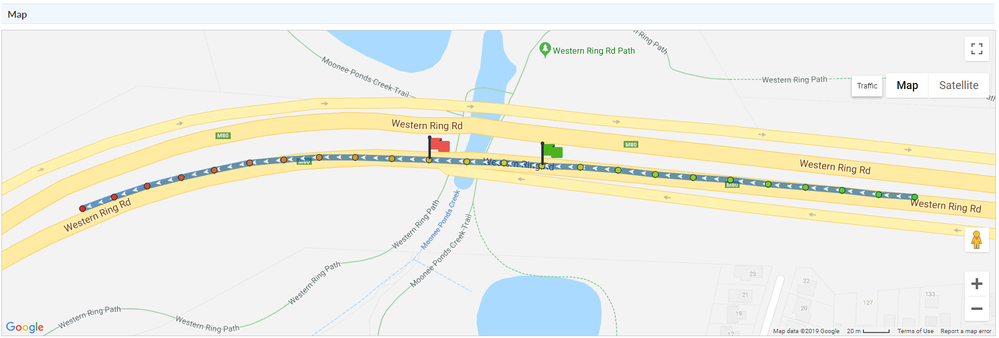How to Interpret Speed Events
Data fields
After running a Speed Event Management Report, each event will contain the following information:
| Device | Shows the device that generated the speed event. This will be either an IVU, Qube or iFace screen |
| Vehicle | Indicates the vehicle that the aforementioned device is assigned to in NextGen |
| Fleet | Fleet that the vehicle is a member of |
| Driver | If you have driver login enabled and your driver was logged in at the time of the incident, then their name will be displayed in this column |
| Branch | Branch that the driver is a member of |
| Start Location | Location of the Speed Event |
| Start | Time at which the speed event started |
| End | Time at which the speed event finished |
| Threshold Type | This refers to which type of speed event has been triggered:
|
| Speed Limit (km/h) | The limit that was breached |
| Max Speed (km/h) | The highest actual speed that was recorded for this particular event |
| Duration (h:m:s) | The length of the event |
| End Type | The reason why the event ended.
|
| View Event | Click on the iconto view more details related to a particular Speed Event |
Event map
After clicking on the View Event iconyou will see the location of the event on a map.
Green = Start of the trip | Orange = Middle of the trip | Red = End of the trip
Speed graph
Event data
NextGen also displays second-by-second speed information at the bottom of the page. This gives you a clear view of the rate at which the speed increases, as well as valuable information regarding the quality of the GPS signal during the speed event.
At times, invalid speeds may display. However, the report will provide GPS values to allow a user to determine the validity of an event.
A valid speed event is typically indicated by a high number of satellites (4+) in the NSAT column, and a low number (<4.0) in the HDOP column.
Related articles



